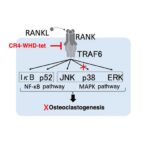![]()
In a groundbreaking study published in Nature, researchers have unveiled intricate mechanisms by which cancer cells achieve phenotypic heterogeneity through polyploidization, revealing two distinct cellular pathways that lead to genome duplication errors. Employing innovative live-cell imaging techniques combined with single-cell tracking, the study sheds new light on how cancer cells evade therapies and acquire genomic instability, potentially informing novel treatment strategies.
Polyploidization—a state in which cells harbor more than two complete sets of chromosomes—has long been recognized as a critical driver of tumor evolution and heterogeneity. It introduces chromosomal instability and aneuploidy, conditions frequently observed in cancer, which correlate with increased therapy resistance and poor patient prognoses. Until now, the precise cellular routes leading to polyploid genomes and their consequences on genome integrity remained understudied.
Using a sophisticated approach that tracks DNA replication dynamics in single cells, researchers identified two mechanistically distinct routes leading to polyploidy: rereplication and endoreplication. Rereplication is characterized by the replication of already duplicated DNA within the same cell cycle, resulting in replication bubbles and genome amplification. Endoreplication, in contrast, involves multiple rounds of DNA synthesis without subsequent cell division, also termed endocycling or endoreduplication. These pathways were observed distinctly in U-2 OS cancer cells treated with pevonedistat, a NEDD8-activating enzyme inhibitor known to stabilize the DNA replication licensing factor CDT1.
Pevonedistat treatment induced significant nuclear enlargement and replication stress, hallmarks of polyploidy. Single-cell lineage analyses demonstrated continuous replication events consistent with both rereplication and endoreplication. Intriguingly, sister cells often exhibited asymmetric replication patterns, highlighting the heterogeneity even within genetically identical cellular lineages. This asymmetry potentially fuels intratumoral diversity by generating cells with different replication histories and genomic contents.
Further investigations revealed that the route by which polyploidy is induced has profound implications for genome integrity. Although cells that underwent rereplication and endoreplication achieved similar DNA ploidies by the end, rereplicating cells accumulated higher levels of DNA damage markers such as γH2AX, suggesting elevated genomic stress. This distinction was affirmed through sequential staining protocols and DAPI-based DNA quantifications, underscoring the differential genome stability consequences based on the underlying polyploidization mechanism.
To elucidate whether oncogenic signaling mimics these polyploidization routes, the team engineered cells to overexpress common cancer-associated oncogenes—H-RAS V12 and cyclin E1. Overexpression of these oncogenes reproduced replication stress phenotypes, including reduced replication fork velocity and increased formation of micronuclei. Importantly, single-cell tracking over multiple generations revealed elevated heterogeneity and polyploidization in these cells, recapitulating the dual pathways observed with pevonedistat treatment. These findings affirm that oncogenic signals can trigger both rereplication and endoreplication routes converging on polyploidy.
Assessing the timing of DNA damage exposure revealed nuanced controls over pathway choice. Cells irradiated in G2 phase exhibited a predilection for endoreplication, whereas G1 phase irradiation skewed replication aberrations toward rereplication in the subsequent S phase. Hence, the cell cycle stage during which DNA damage occurs biases cells toward distinct mechanisms of aberrant genome duplication, emphasizing the dynamic interplay between genotoxic stress and replication control.
To decipher the molecular underpinnings differentiating these polyploid populations, the authors performed fluorescence-activated cell sorting followed by single-cell RNA sequencing of normal and polyploid cells under pevonedistat treatment or HRAS overexpression. Polyploid cells consistently clustered apart from non-polyploid controls, exhibiting dysregulated expression of gene sets enriched for cell cycle regulation, chromosome segregation, DNA replication, and DNA damage response pathways.
Focused subcluster analyses identified a core network of genes strongly associated with mitotic progression and genome maintenance, including key regulators such as CDK1, cyclin A, aurora kinase B (AURKB), and topoisomerase II alpha (TOP2A). This gene signature appears central to orchestrating the balance between rereplication and endoreplication, potentially dictating cellular decisions to undergo one pathway over the other.
Protein-level validation by quantitative imaging confirmed heterogeneity in nuclear cyclin A levels among polyploid cells, aligning with gene expression data. Pharmacological inhibition experiments further supported these functional insights: inhibition of TOP2A preferentially fostered rereplication, whereas CDK1 inhibition primarily induced endoreplication phenotypes. These findings illuminate how targeted interference with key cell cycle regulators can modulate the mode of polyploidization.
Moreover, chromatin binding analysis of replicative helicase components (MCM2, MCM4, and MCM7) revealed distinct loading patterns dependent on the kind of induced replication stress, reflecting the mechanistic divergence underlying rereplication and endoreplication. Such regulation of helicase access may serve as a critical checkpoint to prevent genome overduplication or ensure faithful replication cycles.
These landmark insights articulate a compelling paradigm in which cancer cells exploit multiple routes to increase genomic content, with significant consequences for genome stability and therapeutic resistance. Understanding the differential pathways to polyploidy adds a crucial layer to our knowledge of tumor evolution dynamics and may unearth exploitable vulnerabilities for novel anticancer strategies.
Future research will need to explore how these polyploid states influence tumor aggressiveness and how tumor microenvironmental factors might steer cells towards one polyploidization route or another. Ultimately, targeting the molecular circuits that govern rereplication and endoreplication may offer avenues to curtail cancer cell adaptability, potentially enhancing the efficacy of existing treatments.
By integrating advanced live-cell imaging, genetic manipulation, and transcriptomic profiling, this study sets a new standard for dissecting complex cellular behaviors at single-cell resolution across generations. The revelation of two distinct yet interrelated pathways to oncogenic polyploidy heralds a new understanding of genome instability in cancer and opens the door to innovative diagnostic and therapeutic approaches.
Subject of Research: Mechanisms of polyploidization and genome instability in cancer cells through DNA replication dynamics and oncogene overexpression.
Article Title: Multigenerational cell tracking of DNA replication and heritable DNA damage.
Article References:
Panagopoulos, A., Stout, M., Kilic, S. et al. Multigenerational cell tracking of DNA replication and heritable DNA damage. Nature (2025). https://doi.org/10.1038/s41586-025-08986-0
Image Credits: AI Generated
Tags: cancer cell polyploidizationchromosomal instability in tumorsDNA replication dynamicsendoreplication and rereplication pathwaysgenomic instability in cancer cellslive-cell imaging in cancer researchmechanisms of genome duplication errorsnovel cancer treatment strategiesphenotypic heterogeneity in cancersingle-cell tracking techniquestherapy resistance in cancer treatmentU-2 OS cancer cell studies


